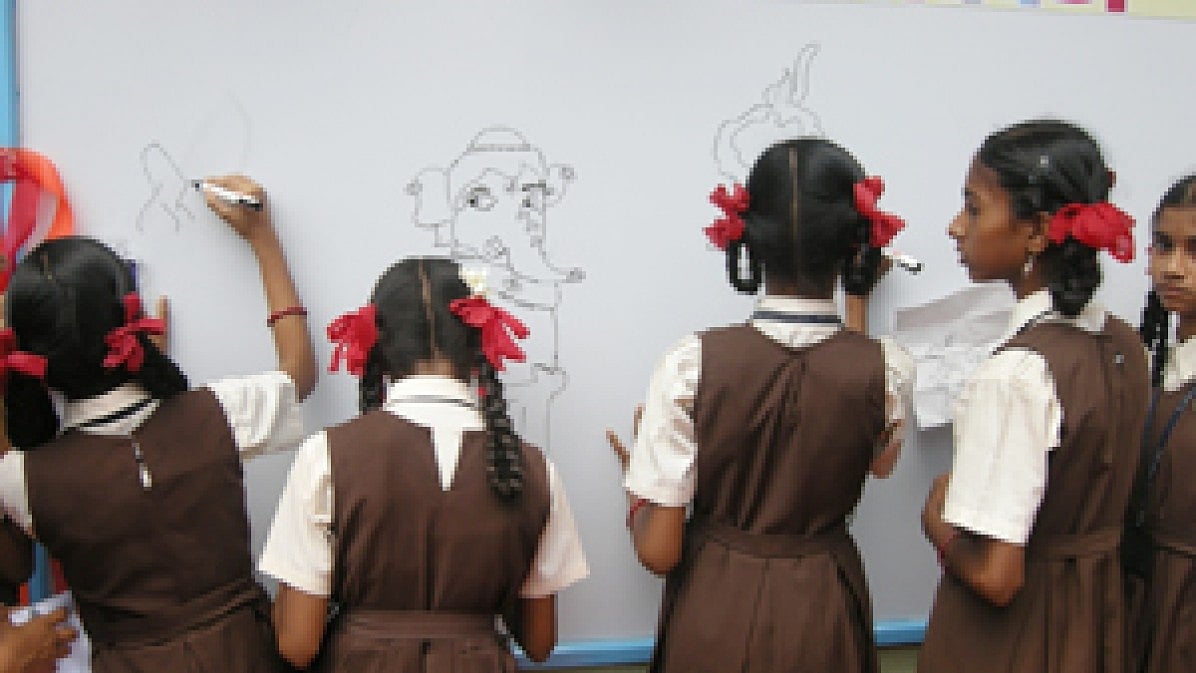On January 24th, the world celebrated Education Day. So did we. And why not? As going by the latest statistics, which state that India’s literacy rate is 77.7%, one can say that the drive to educate Indians has been successful to a certain extent.
Education is one of the benchmarks of a country’s progress, as it facilitates economic and social mobility. But its most critical role is to create a thriving society based on modern, progressive ideas. Overall, education propagates information, preserves traditions and social values and ushers in change by developing new ideas. But the real question is: how have we, as a people, used this education to progress, both as individuals and as a community? And, most importantly, what has been our learning so far?
Education and learning are two entirely different concepts. In that, education is just one aspect of learning. It is structured, conventional and limited in its scope, whereas learning can be unstructured, is unconventional and limitless. That said, the most crucial aspect of education and learning is what is being taught and what is being learnt and ingrained. That creates the basis of a society. And this is where reading becomes important. When seen in the context of society today, one can see a great mismatch between teaching and learning. Which means that we are getting educated but not necessarily becoming learned.
There are two apparent reasons for this: first, reading as a habit has taken a setback; and second, the current Indian education system focuses more on science and technology than literature. Reading literature builds character. And literature is not just light reading, it is also a mirror to society and underlines the malaise that sets in with time. It raises questions and asks for solutions to problems.
A look at the past few decades shows that reading, as a habit, has taken a huge beating. People are seeking information, but the platforms have changed. Instead of books, they are turning to Internet and Instagram. Historian S. Irfan Habib acknowledges that decline in reading has affected the mental abilities of people. Their power of reasoning has been compromised. Today, an opinion is based on a WhatsApp forward. It’s too simple, too quick, too short, and too precise. And nobody has the time to question or verify it.
There was a time when reading was a favourite pastime of the educated. A lot of literature in English, Hindi and vernacular languages catering to varied subjects was generated, consumed and greatly debated at Kolkata’s addas, Lucknow’s baithaks and Delhi’s darbars. Reading was changing mindsets. It was creating awareness about social issues, about class consciousness.
The years following independence were highly tumultuous for India, politically, economically, socially and emotionally. The ecstasy of being free of imperial rule and the pain of Partition generated mixed emotions amongst people, which were reflected in the works of Punjabi, Hindi and Urdu literature. Hence, one finds society of the 50s, 60s and 70s getting enriched by an assortment of literary marvels telling soul-stirring tales of human tragedy, exploitation, poverty, gender discrimination, abuse and an occasional love story. The impact was evident in the motto of the middle class: simple living, high thinking. This translated into their lives in how they dressed, what they ate, and how they spent their money. Most importantly, there was space for differing viewpoints.
It is with the emergence of a new, ambitious, upwardly mobile, and consumerist society post liberalisation that one sees the transformation of the “educated.” This new class differs from the old in every respect: attitude, behaviour, ambition, aspiration, and values. What is most tragic is that it has traded the old-world charm of books for a new digitised way of living. No wonder then that they are unaware of the real issues facing the country. And even if they know, they are totally ill-equipped to deal with them, as they lack the knowledge and understanding required to do the same.
A major share of the blame rests with the education system of our country, which focuses more on rote learning than understanding the concepts. According to the data provided by the Ministry of Education, 43.3 million students have enrolled for higher education. As per a Business Standard report, “India produces a staggering 1.5 million engineering graduates annually. The India Skills Report 2025 states that 55% of Indian graduates are projected to be globally employable.
Now, the question remains: do these numbers correspond to developing a scientific temper or rational thinking?
Article 51A(h) of The Constitution of India 1949, under Fundamental Duties, clearly states that ‘It shall be the duty of every citizen of India to develop the scientific temper, humanism and the spirit of enquiry and reform.’ However, a growing number of spiritual gurus on social media belie this. It is not just the lower classes that believe in superstition; when it comes to that, many educated middle class individuals, too, lack logic and reasoning, people assembling in groups to drink and promote cow urine as a COVID remedy, a case in point.
One doesn’t need to be a science student to develop rational thinking. It is an approach. When Bhagat Singh called himself an atheist, he was basically questioning long-held notions passed on from generation to generation. At a time when the religious fervour was at its zenith (pre-Partition), he was able to voice his dissent. A difference of opinion did not result in public shaming or lynching.
Recently, a journalist commented that there is no space in newspapers for articles related to history and art because “people are not interested in reading them.” The statement speaks volumes about readers’ outlook towards gainful reading. The message is clear – knowledge is expendable now.
